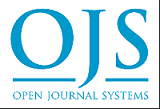Ergonomics Exercises on blood pressure control among hypertensive patients
DOI:
https://doi.org/10.33024/minh.v7i6.566Keywords:
Blood Pressure, Ergonomics Exercise, HypertensionAbstract
Background: Hypertension affects more than 31% of the adult population globally, data released by Cardiovascular Diseases (CDVs) hypertension is one of the largest contributors to cardiovascular disease. Untreated hypertension can increase the risk of heart disease, kidney failure, and stroke. The spread of hypertension will continue to grow strongly and it is predicted that in 2025 as many as 29% or around 1.15 billion individuals will suffer from hypertension. Deaths due to hypertension and its complications are estimated to reach 9.4 million people each year.
Purpose: To determine the effect of ergonomics exercises on blood pressure control among hypertensive patients.
Method: This study used a quasi-experimental pre-post test with group control design on the education of providing ergonomic exercise for controlling blood pressure in hypertensive patients or called Ce'Esi (prevent hypertension), divided into two groups, namely the intervention group and the control group. This study was conducted on all hypertensive patients who were treated at health centers in three cities in Indonesia, namely Cianjur Health Center, Permata Sukarame Health Center Bandar Lampung, and Tamanlanrea Health Center Makassar, which was carried out in March-July 2024. Data analysis used univariate and bivariate statistical tests Paired t-test and Independent t-test.
Results: There were significant differences in the intervention group, namely health status scores, knowledge, compliance, and diastolic pressure (p-value 0.000), while systolic pressure (p-value 0.003). in the control group, no significant differences were found in all variables. This shows that hypertension management education interventions and ergonomics exercises can improve the health status of hypertensive patients, knowledge, compliance, and lower diastolic blood pressure.
Conclusion: Health education and ergonomics exercise using videos in preventing hypertension can improve knowledge, compliance, health status, and lower blood pressure in hypertension sufferers.
References
Adam, L., & Aswad, A. (2020). Pemberian Jus Carica Papaya Terhadap Penurunan Tekanan Darah Pada Penderita HipertensI. Jambura Health and Sport Journal, 2(2), 60-67.
Afelya, T. I., Syam, S. H., & Mangemba, D. (2024). Hubungan Pengetahuan dengan Perilaku Diet Hipertensi: Relationship between Knowledge and Hypertension Diet Behavior. Lentora Nursing Journal, 4(2), 20-26.
Arija, V., Villalobos, F., Pedret, R., Vinuesa, A., Jovani, D., Pascual, G., & Basora, J. (2018). Physical activity, cardiovascular health, quality of life and blood pressure control in hypertensive subjects: randomized clinical trial. Health and quality of life outcomes, 16, 1-11.
Ayu, S. A., Achmad, V. S., Wijayaningsih, K. S., & Nurajizah, R. S. (2024). Peran Kemandirian Kesehatan Keluarga Terhadap Kontrol Diri pada Individu Penderita Hipertensi. MAHESA: Malahayati Health Student Journal, 4(3), 907-927.
Ayu, S. A., Dewi, S. K., Utami, N., Anggraeni, R., & Nuryani, S. (2023). Upaya Peningkatan Manajemen Diri Penderita Hipertensi Melalui Senam Ce'Esi (Cegah Hipertensi) Di Wilayah Kerja Puskesmas Cijedil. Cugenang”: Upaya Peningkatan Manajemen Diri Penderita Hipertensi Melalui Senam Ce'Esi (Cegah Hipertensi) Di Wilayah Kerja Puskesmas Cijedil, Cugenang. Jurnal Pengabdian Masyarakat Kesehatan Terkini, 2(2), 100-112.
Cornelissen, V. A., & Fagard, R. H. (2005). Effects of endurance training on blood pressure, blood pressure–regulating mechanisms, and cardiovascular risk factors. Hypertension, 46(4), 667-675.
Cornelissen, V. A., & Smart, N. A. (2013). Exercise training for blood pressure: a systematic review and meta‐analysis. Journal of the American heart association, 2(1), e004473.
Diaz, K. M., & Shimbo, D. (2013). Physical activity and the prevention of hypertension. Current hypertension reports, 15, 659-668.
Dimeo, F., Pagonas, N., Seibert, F., Arndt, R., Zidek, W., & Westhoff, T. H. (2012). Aerobic exercise reduces blood pressure in resistant hypertension. Hypertension, 60(3), 653-658.
Efliani, D., Ramadia, A., & Hikmah, N. (2022). Efektifitas senam hipertensi terhadap penurunan tekanan darah pada lansia di upt pstw khusnul khotimah pekanbaru. Menara Medika, 4(2).
Gao, Y., Chen, G., Tian, H., Lin, L., Lu, J., & Weng, J. (2013). Prevalence of hypertension in China: a cross-sectional study. PloS one, 8(6), e65938.
Hernawan, T., & Rosyid, F. N. (2017). Pengaruh senam hipertensi lansia terhadap penurunan tekanan darah lansia dengan hipertensi di panti wreda Darma Bhakti Kelurahan Pajang Surakarta. Jurnal kesehatan, 10(1), 26-31.
Hikmaharidha, I., & Hardian, H. (2011). Pengaruh senam tai chi terhadap tekanan darah wanita berusia 50 tahun ke atas (Doctoral dissertation, Faculty of Medicine).
Ifansyah, M. N., Herawati, H., & Diani, N. (2015). Senam lansia terhadap penurunan tekanan darah pada lansia dengan hipertensi. Dunia Keperawatan J Keperawatan dan Kesehat, 3(1), 86-93.
Keller, K., Hartung, K., del Castillo Carillo, L., Treiber, J., Stock, F., Schröder, C., & Friedmann-Bette, B. (2022). Exercise hypertension in athletes. Journal of Clinical Medicine, 11(16), 4870.
Lampung Provincial Health Office. (2023). Profil Kesehatan Provinsi Lampung Tahun 2022. Received from: https://dinkes.lampungprov.go.id/download/profil-kesehatan-provinsi-lampung-tahun-2022/
Laugesen, J., Hassanein, K., & Yuan, Y. (2015). The impact of internet health information on patient compliance: a research model and an empirical study. Journal of medical Internet research, 17(6), e143.
Li, R., Liang, N., Bu, F., & Hesketh, T. (2020). The effectiveness of self-management of hypertension in adults using mobile health: systematic review and meta-analysis. JMIR mHealth and uHealth, 8(3), e17776.
Mills, K. T., Stefanescu, A., & He, J. (2020). The global epidemiology of hypertension. Nature Reviews Nephrology, 16(4), 223-237.
Ministry of Health of the Republic of Indonesia . (2019). Laporan Riskesdas Provinsi Lampung Tahun 2018. Recived from: https://repository.badankebijakan.kemkes.go.id/id/eprint/3875/
Ministry of Health of the Republic of Indonesia. (2018). Laporan Riskesdas Nasional 2018. Recived from: https://repository.badankebijakan.kemkes.go.id/id/eprint/3514/
Ministry of Health of the Republic of Indonesia. (2020). Profil Kesehatan Indonesia 2020. Recived from: https://kemkes.go.id/id/category-download/profil-kesehatan.
Nelwan, J. E., & Sumampouw, O. (2019). Pengaruh penyuluhan kesehatan terhadap perubahan pengetahuan masyarakat tentang hipertensi di Kota Manado. Journal PHWB, 1(2), 1-7.
Notoatmodjo, S. (2007). Health promotion and behavioral science. Jakarta: Rineka Cipta, pages 296, 297.
Novitaningtyas, T., Puspowati, S. D., & Purwani, E. (2014). Hubungan karakteristik (umur, jenis kelamin, tingkat pendidikan) dan aktivitas fisik dengan tekanan darah pada lansia di kelurahan makamhaji kecamatan kartasura kabupaten sukoharjo (Doctoral dissertation, Universitas Muhammadiyah Surakarta).
Onoruoiza, S. I., Musa, A., Umar, B. D., & Kunle, Y. S. (2015). Using health beliefs model as an intervention to non compliance with hypertension information among hypertensive patient. International Organization of Scientific Research Journal Of Humanities And Social Science, 20(9), 11-16.
Park, J. B., Kario, K., & Wang, J. G. (2015). Systolic hypertension: an increasing clinical challenge in Asia. Hypertension Research, 38(4), 227-236.
Priana, A. (2016). Pengaruh Olahraga Senam Tai Chi terhadap Kesehatan Mental Emosional Lanjut Usia. Journal of SPORT (Sport, Physical Education, Organization, Recreation, and Training), 1(1), 32-39.
South Sulawesi Provincial Health Office. (2020). Profil Kesehatan Provinsi Sulawesi Selatan 2020. Recieved from: https://dinkes.sulselprov.go.id/document/Profil%20Kesehatan/
Sumartini, N. P., Zulkifli, Z., & Adhitya, M. A. P. (2019). Pengaruh senam hipertensi lansia terhadap tekanan darah lansia dengan hipertensi di Wilayah Kerja Puskesmas Cakranegara Kelurahan Turida tahun 2019. Jurnal Keperawatan Terpadu (Integrated Nursing Journal), 1(2), 47-55.
Suratun, S., Ekarini, N. L. P., & Sumartini, M. (2018). Pengaruh Edukasi Gaya Hidup Sehat terhadap Pencegahan Dini Hipertensi pada Remaja. Jkep, 3(2), 131-142.
Surti, S., Candrawati, E., & Warsono, W. (2017). Hubungan antara Karakteristik Lanjut Usia dengan Pemenuhan Kebutuhan Aktivitas Fisik Lansia di Kelurahan Tlogomas Kota Malang. Nursing News: Jurnal Ilmiah Keperawatan, 2(3).
Van Horn, L., Peaceman, A., Kwasny, M., Vincent, E., Fought, A., Josefson, J., & Gernhofer, N. (2018). Dietary approaches to stop hypertension diet and activity to limit gestational weight: maternal offspring metabolics family intervention trial, a technology enhanced randomized trial. American journal of preventive medicine, 55(5), 603-614.
West Java Health Office. (2020). Profil Kesehatan Jawa Barat tahun 2020. Received from: https://www.scribd.com/document/611760230/Profil-Kesehatan-Jawa-Barat-Tahun-2020
World Health Organization. (2023). Hypertension. Recived from: https://www.who.int/news-room/fact-sheets/detail/hypertension
Yin, R., Yin, L., Li, L., Silva-Nash, J., Tan, J., Pan, Z., & Yan, L. L. (2022). Hypertension in China: burdens, guidelines and policy responses: a state-of-the-art review. Journal of human hypertension, 36(2), 126-134.
Downloads
Published
How to Cite
Issue
Section
License
Copyright (c) 2024 Malahayati International Journal of Nursing and Health Science

This work is licensed under a Creative Commons Attribution-ShareAlike 4.0 International License.









